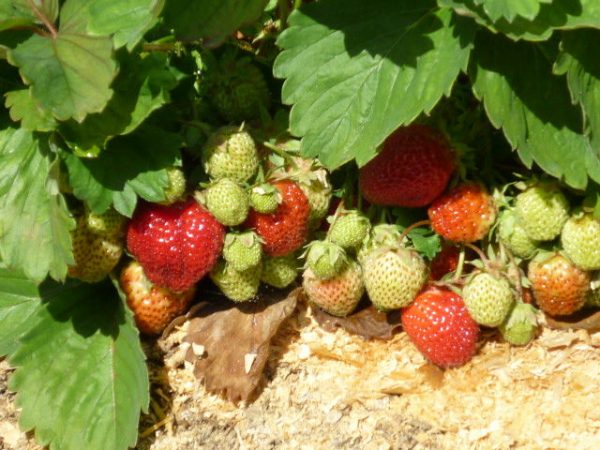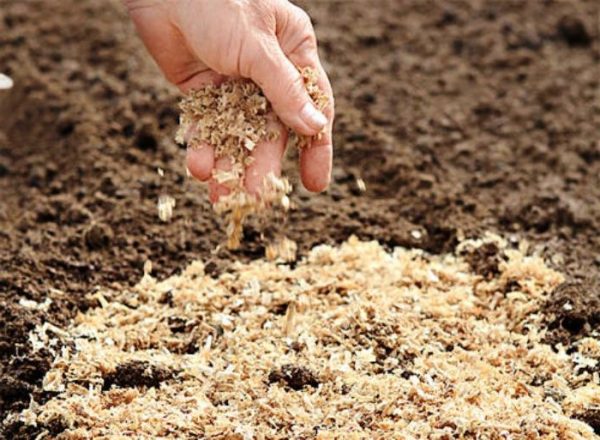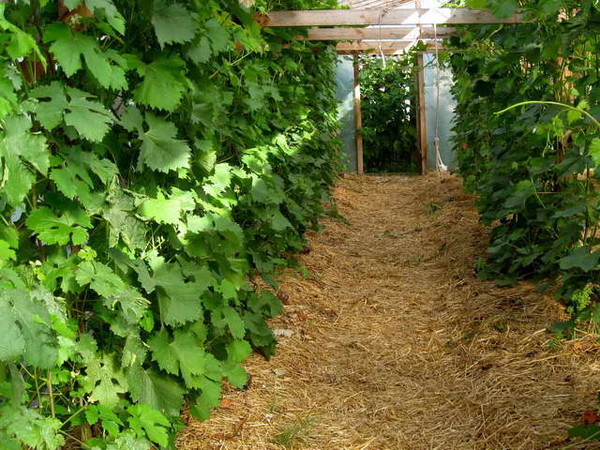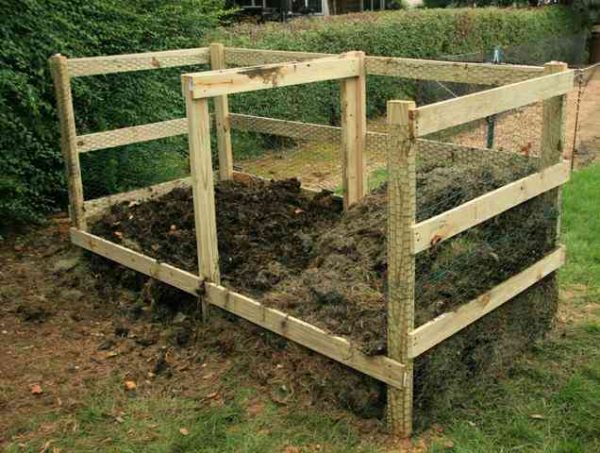When is it worth adding sawdust to the soil and what is the benefit
Content
What will sawdust in the soil give
Sawdust is an excellent loosening organic material, if added, the soil becomes light, perfectly permeable to air and moisture, and does not form crusts. The root system of plants develops better in it, with it there is less hassle for the summer resident, because you can loosen it much less often. Sawdust in the soil itself becomes fertilizer, along with other organic matter. All this is true only if you add not fresh sawdust, but rotted, or at least half rotted.
Fresh sawdust takes nitrogen from the ground, and this should not be allowed, because nitrogen is very important for the plant at all stages of its life, especially during the period of rapid growth. This means that only rotted sawdust should be used for a vegetable garden (for a garden, a flower garden), they usually have a dark brown color and not as hard texture as fresh ones.If this process is not regulated in any way, then you can pile them up and wait at least 10 years. The decay process slows down, because a crust forms on top of such a heap, which does not allow moisture to pass through, and inside there is absolutely no living organic matter. It should be accelerated by mixing sawdust with manure, for example, horse manure, or adding them to compost. Another caveat: Using a lot of sawdust makes the soil more acidic. This scares some gardeners, but in vain, you just need to add lime, this will restore acidity.
Sawdust as a mulching material
You can mulch everything that grows in the garden with sawdust: vegetables, raspberry bushes, strawberry bushes. If you cover the ground in the garden with a layer of 3 cm thick, then the moisture will be better preserved in the ground - you will have to water less often. Thanks to this mulch, weeds practically do not grow between the strawberry bushes, the berries are always clean, dry, they are not threatened with rot. Only sawdust before use must be "prepared" in this way: 3 buckets of sawdust are poured onto the spread film, 200 g of urea is poured on top, all this is poured with water (at least 10 liters). You can make several such layers, cover the top with a film, press it down to create a greenhouse effect. After 2 weeks, you can pour mulch into the garden.
It is reasonable to use such mulch in the garden from the beginning of summer, it will retain moisture, and by the end of summer it will smoothly mix with the top layer of the soil, making it much more fertile, looser. If you put it out in the garden in the second half of summer, it will be less useful when it rains, when excess moisture should actively evaporate. Too thick a layer of mulch may not have time to mix with the soil, then the earth will need to be thoroughly loosened, and dig up in the fall - the layer of excess mulch will freeze in the spring and delay the thawing of the earth.
A thick layer of sawdust is poured among the raspberries - at least 20 cm, then lime is poured on top and the whole thing is poured with a solution of urea (1 glass of urea per 1 bucket of water). All this gradually turns into an excellent fertilizer, slowly but constantly arriving at the roots of raspberries, and the need for loosening disappears. This mulch protects the bushes from pests.They say that with such a top dressing, raspberries give a wonderful harvest for more than 10 years in one place. Strawberries and potatoes are advised to mulch with fresh sawdust of coniferous trees (before sprinkling them, you need to spill them with a urea solution) - they scare away the weevil and the Colorado potato beetle.
Use in greenhouses
In greenhouses, to enrich fresh sawdust with nitrogen, they are mixed with horse manure or other organic matter. In this case, the manure must also be fresh, and the rotted horse manure is mixed with rotted sawdust. This combination makes horse manure warm up more in spring, and overheating occurs faster. Sawdust can be added to greenhouse beds both in spring and autumn. It is good in the fall to put plant residues on the beds (grass, leaves, vegetable tops), and in the spring to lay horse manure on top, sprinkle it with lime and carpentry waste. Then all this must be mixed with a pitchfork, and on top put straw with soil, add ash and mineral fertilizers. If poured with boiling water, then such a soil-mineral-organic mixture will heat up faster.
Outdoor use
Sawdust is actively used to form beds and get rid of excess moisture.
In the lowlands around the planned bed, a trench 30-40 cm wide and 20-25 cm deep is dug out. The earth is transferred from it to the bed, and the trench is filled with sawdust. Thus, the edges are protected from drying out, and a dry path is organized. Later, the sawdust will be milled and turned into an excellent fertilizer, which will mix with the soil during general digging.
Some summer residents arrange high garden beds. To do this, a trench is dug at least 1 m wide, plant remains are laid in it, sawdust with urea on top, then again a layer of grass and leaves, and the dug earth is placed on top. So that the edges do not crumble and do not lose moisture, they are closed with peculiar bumpers of straw and turf (roots outward), laid with a film. Many vegetables and flowers like to grow in such high beds. Sawdust mixed with horse manure is introduced into the open ground, but for this you cannot use the waste of coniferous trees - they re-heat too slowly.
Video "On the benefits and dangers of sawdust"
This video talks about the benefits and harms of using sawdust.
Sawdust in compost
Sawdust is the most beneficial fertilizer, making excellent compost. They are mixed (1 cubic meter) with horse manure (100 kg) and poultry droppings (10 kg), poured with water, sheltered from the cold, and a year later they receive an excellent fertilizer for all horticultural and horticultural crops. As in any compost, grass is added there (without seeds, it is desirable), leaves, and kitchen waste. Manure can be replaced with poultry manure, mullein, or urea solution.
If you add soil to such compost, and even with earthworms, things will go faster. The finished humus, soft and dark, is completely different from what was laid in the compost heap at first, it rather resembles crumbly greasy soil, this is how it is introduced into the soil. So, if after construction or carpentry work you have small waste, do not rush to get rid of them - it is better to arrange a compost heap. The land is inevitably depleted during cultivation, so good fertilizers are always needed.
Video "Everything you need to know about soil mulching"
Video instruction on soil mulching and types of mulch.





